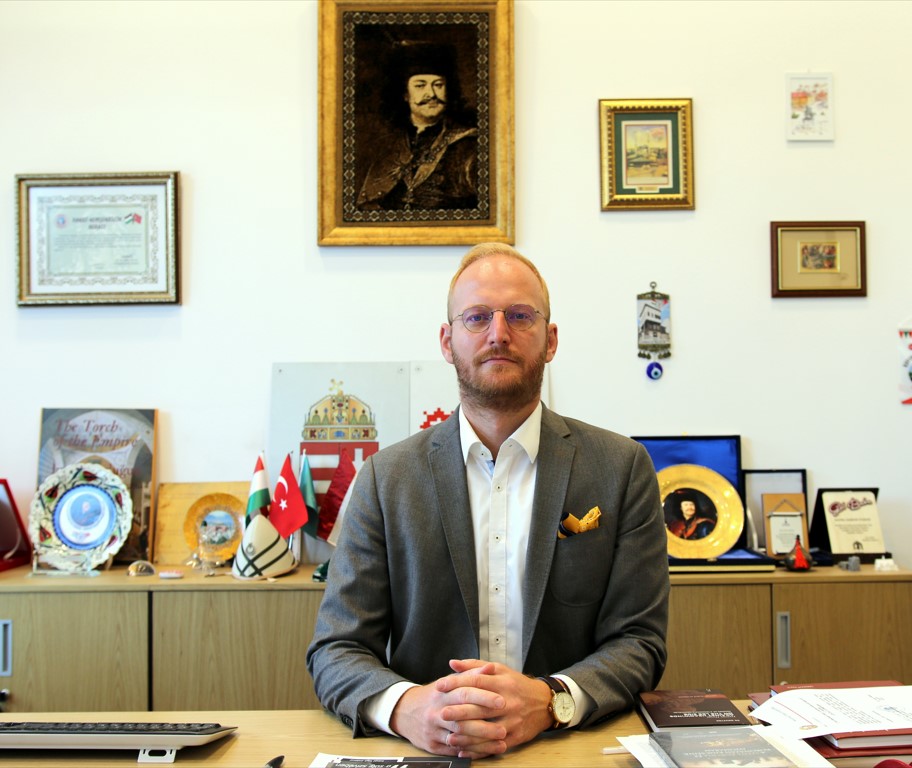Liszt Institute Istanbul | We had a pleasant conversation with the director of the Hungarian Cultural Center, Mr. Gábor Fodor, on the occasion of the Hungarian Culture Day.
– Mr. Fodor, first of all, thank you for accepting my interview offer. We are celebrating the 200th anniversary of the writing of the Hungarian National Anthem. May I know your feelings on this matter?
Thank you for bringing this offer.
Hungarian poet, critic, politician and thinker Ferenc Kölcsey completed her poem “Hymnus”, which would later form the words of the Hungarian National Anthem, on January 22, 1823. The manuscript titled “Hymnus, a magyar nép zivataros századaiból” (translated as “Hymn to the turbulent centuries of the Hungarian people”) is on display at the Hungarian National Museum today. From a historical point of view, the period in which the work was written and the Hungarian Revolution in 1848-49 and the Freedom War are an important process to defend, protect and maintain the Hungarian identity. Political leaders, poets, thinkers and, of course, the people, who made a great revolt against the oppression and yoke of the Habsburg Empire, played a leading role in the formation of the Hungarian identity that has survived to the present day. In this sense, this work and this historical process are the basic elements that make us who we are.
– Are there similarities between Hungarian Culture and Turkish Culture?
The origin of the Hungarians goes back to Central Asia, where they were neighbors with the Turkish tribes. The Hungarians became close to the Turks in many ways and established friendships. Although there are two different cultures, many traces have remained in terms of language, food and architecture during the years when Hungary was under the rule of the Ottoman Empire. Today, there are many words that have been transferred to Hungarian from Turkish. Many mosques and baths built during the Ottoman period in Hungary; Red pepper, which entered the Hungarian cuisine completely during the Ottoman period, is the best example.
On the other hand, as Niyazi Berkes argues in her book Modernization in Turkey, one of the triggers of the modernization movement in the Ottoman period was the epistle written by Hungarian-born İbrahim Müteferrika. Berkes argues that Müteferrika’s personal efforts and works are very important and that the progress in science and technique in the Ottoman Empire is based on her ideas.
Another important point is that during the 1848-49 Hungarian Revolution and the Freedom War, the invaluable Hungarian leaders who led this movement sought asylum in the Ottoman Empire and many of them settled in cities such as Kütahya and Tekirdağ. In addition, many architects, engineers, masters, researchers, musicians, academics, who came to Turkey to work and/or do research in the early years of the Republic, made great efforts in the construction of modern Turkey and left their mark. I recommend you to take a look at our website www.turkmagyarizi.com, where we have compiled all these elements.
– You organize important cultural events, especially Online Hungarian Courses, at the Hungarian Cultural Center. What do you think about the Turkish people’s interest in Hungarian culture?
Wherever you go in Turkey, there is great sympathy for the Hungarians. This is a very valuable element, but of course, our duty is to contribute to it and build something on it. We carry the universal Hungarian culture to Turkey while we carry out works that highlight our common points with the events and activities we carry out. Naturally, there is interest from different groups in activities that take place in different disciplines. To give an example, the exhibition “A Versatile Architect: Şandor Hadi”, which we opened last November, attracted great interest from the field of architecture and urbanism. Different groups are interested in our contemporary art exhibition or history meetings.
– Can you tell us about your activities in 2023? What awaits art lovers at the Hungarian Cultural Center this year?
In the New Year, a busy culture-arts agenda awaits both us and art lovers. If we count the areas of interest; We plan to organize events reflecting Hungarian culture under the disciplines of history, traditional arts, gastronomy, literature, music and cinema. You can follow us on our social media accounts…
Web: https://culture.hu/tr/istanbul
Facebook: facebook.com/macarkulturmerkezi
Instagram: instagram.com/liszt_enstitusu_istanbul
Twitter: twitter.com/macarkultur














Be First to Comment